PROGRAM INFORMATION
MISSION
The Naval Architecture program is designed to:
The Naval Architecture program is designed to prepare graduates to enter the workforce with a sound background in Naval Architecture technology along with a range of practical skills ready for use on their first day of employment.
Main Areas of Study:
Characteristics of Graduates:
As per the Marine Institutes minimum entrance requirements for Diploma of Technology programs.
Length of the Program:
Number of Semesters:
Number of Courses:
Work Terms:
Topics Covered in each Semester:
| Term 1 CHEM 1100 (Chemistry) ENGR 1103 (Engineering Graphics) ENSY 1103 (Marine Systems) One of: MATH 1100 (Pre-Calculus) or MATH 1101 (Introduction to Calculus) NARC 1103 (Ships and Shipping) PHYS 1100 (Physics) |
Term 2 CMSK 1104 (Introduction to Technical Reporting) ENGR 1201 (Introduction to AutoCAD) FLDS 2100 (Fluid Mechanics) One of: MATH 1100 (Pre-Calculus) or MATH 1101 (Introduction to Calculus) or MATH 1200 (Calculus) MECH 2102 (Mechanics) NARC 1104 (Steel Ship Structure) PHYS 1200 (Physics) |
Technical Session I MATH 1200 (Calculus) MTPR 2104 (Materials and Processing) NARC 1101 (Ship Hull Geometry) |
Term 3 ELTK 1100 (Electrotechnology) MREK 2101 (Marine Engineering Knowledge) MTPR 2100 (Strength of Materials) NARC 1303 (Vessel Operations) NARC 2107 (Ship Building) NARC 2108 (Outfitting) NARC 2109 (Hydrostatics) |
| Term 4 ELTK 1200 (Electrotechnology) MATH 2101 (Advanced Calculus) MTPR 3100 (Strength of Materials) NARC 2103 (Ship Stability) NARC 2207 (Ship Building) NARC 2208 (Ship Building) |
Technical Session 2 ELTK 2104 (Electrotechnology) MREK 2201 (Marine Engineering Knowledge) MTPR 3201 (Strength of Materials) NARC 2319 (Vessel Selection) |
Term 5 NARC 2201 (Resistance and Propulsion) NARC 3102 (Ship Design) NARC 3103 (Ship Structural Design) NARC 3104 (Preliminary Design Project) NARC 3108 (Boat Design - Composite Structure) NARC 3203 (Hull Form Development Project) |
Term 6 NARC 3106 (Stability) NARC 3201 (Marine Electrical Project) NARC 3202 (Marine Engineering Project) NARC 3204 (Ship Structural Design Project) NARC 3206 (Ship Arrangement Project) NARC 3208 (Boat Design-Fabrication) |
| Technical Session 3 NARC 3209 (Offshore Structures) NARC 3300 (Ship Design Project) NARC 3301 (Shipyard Management) |
There are no specific physical requirements required to enroll in the Naval Architecture program.
Naval Architecture graduates will be entering a broad and diverse field in ship and boat design, construction, and repair. The offshore oil and gas industry is also employing many graduates, along with various regulatory bodies such as Transport Canada, the American Bureau of Shipping, and Lloyds Register. While many work in an office environment, some jobs involve ship survey work or overseeing construction in shipyards or offshore. Graduates will be well prepared for a wide variety of these employment opportunities.
Types of Companies Graduate will find Work:
Graduates of the program typically work in shipyards, boatyards, general consulting firms, classification societies/marine surveyors, marine offshore industries, research establishments and government agencies.
Type of Job Titles:
See Sample Job Description
Location:
Students typically find employment in Canada and the United States, and some graduates have found employment overseas.
Sample Job Description
Typical activities for a Naval Architect Technologist associated with job titles:
Hull Draftsman
Chief Draftsman
Consultant Naval Architect
Ship Surveyor
